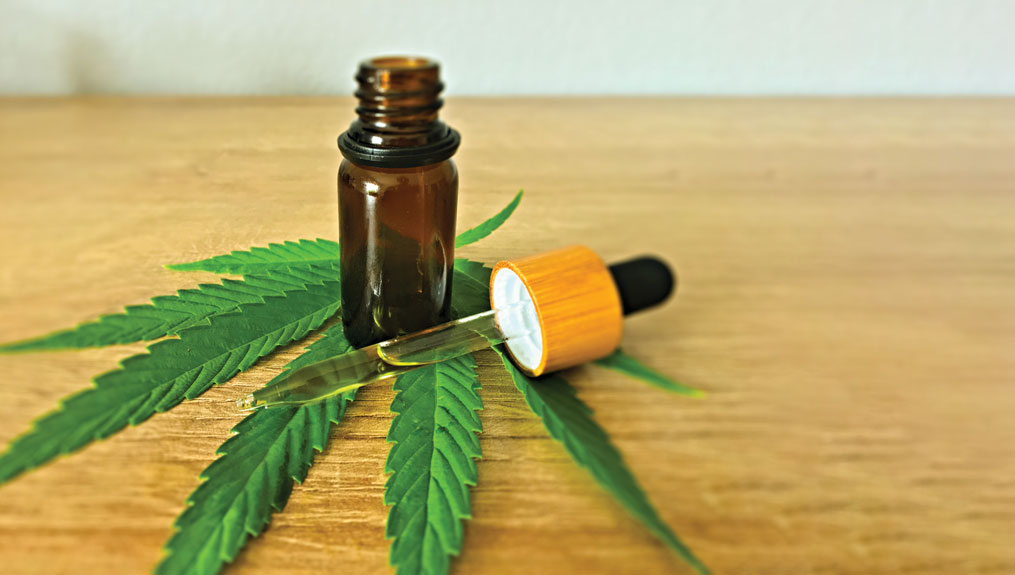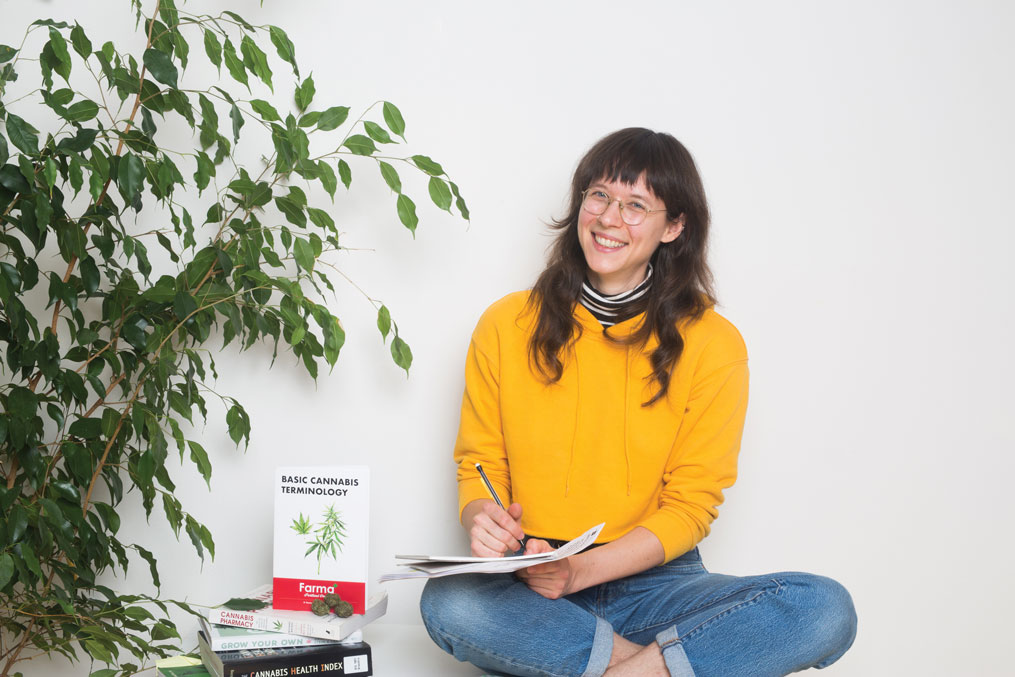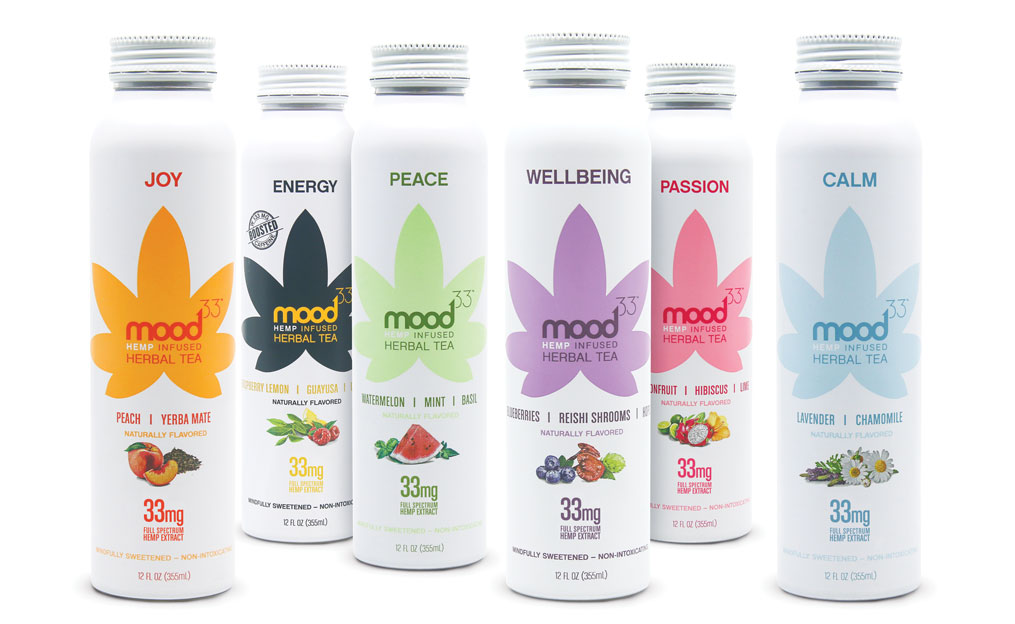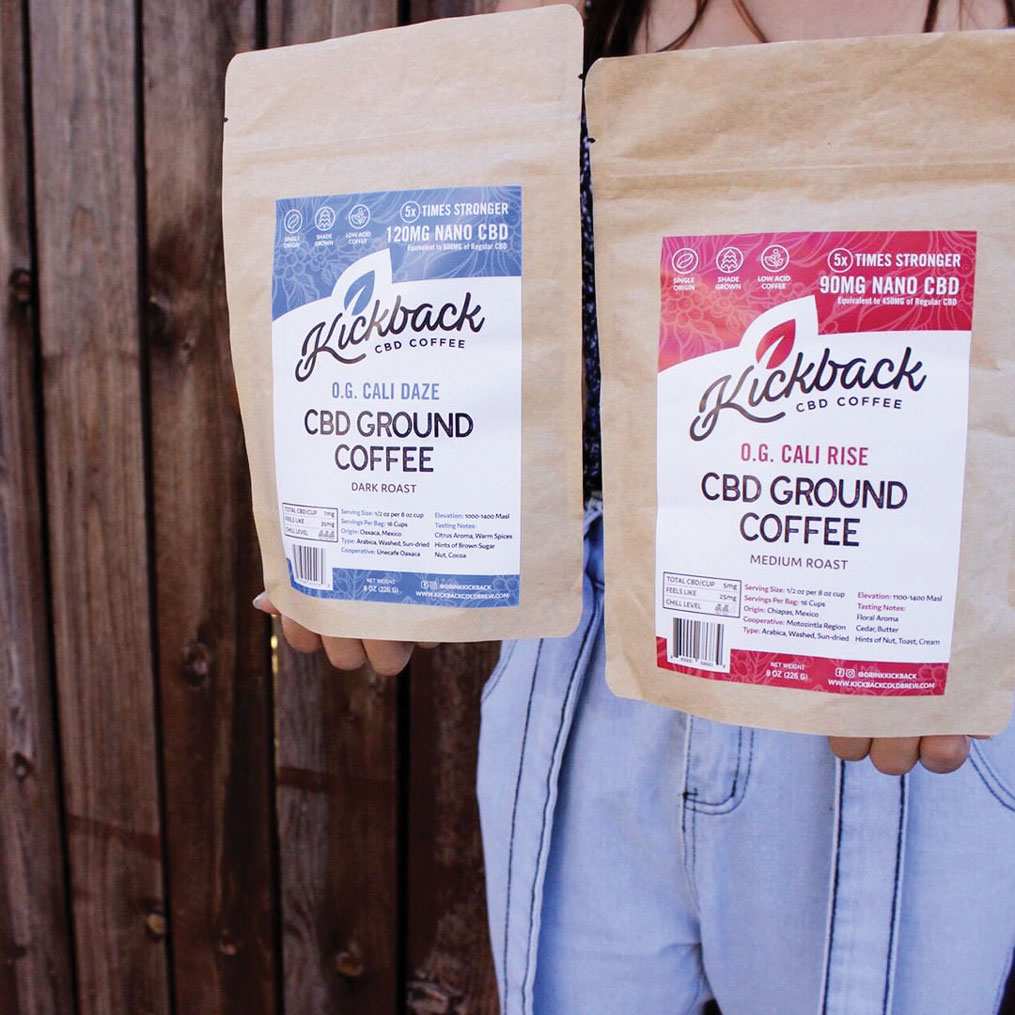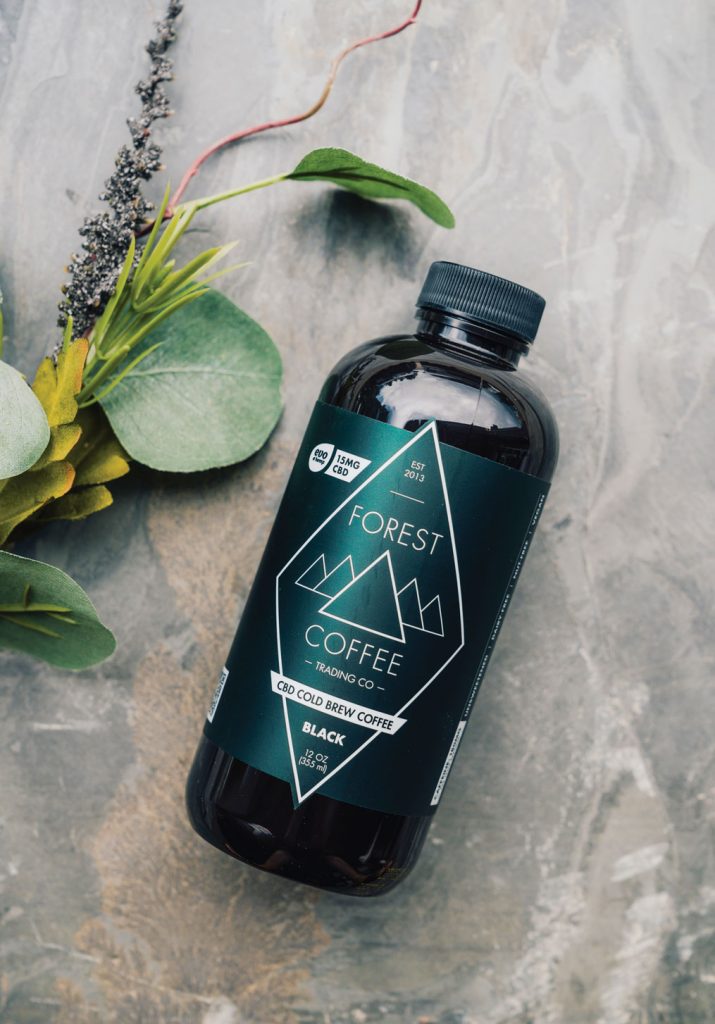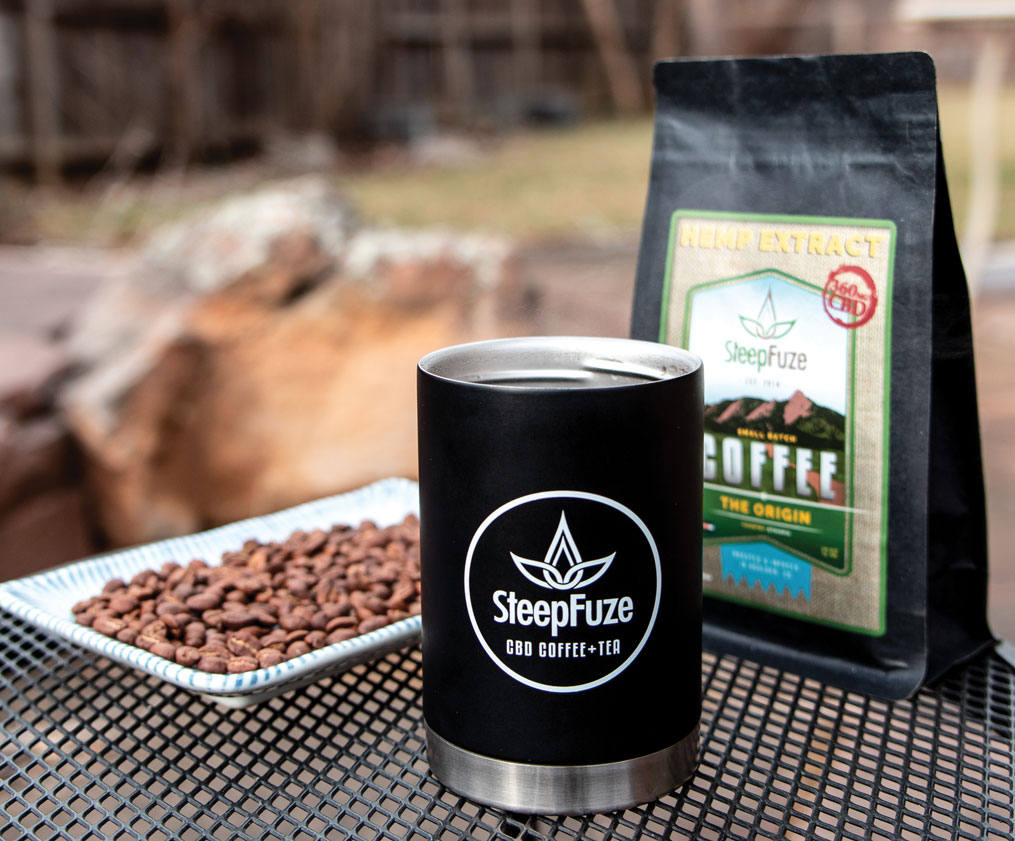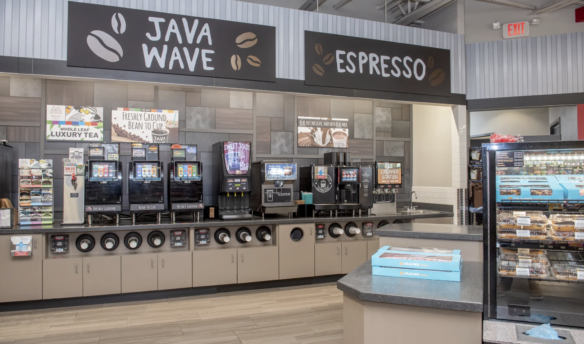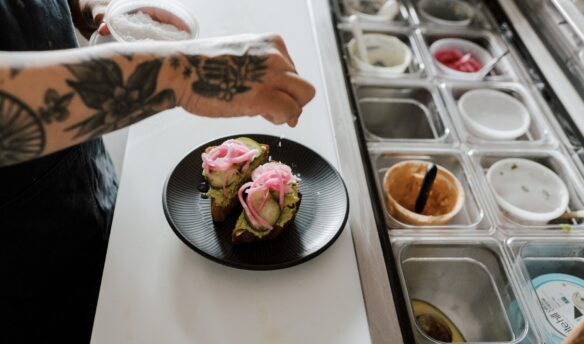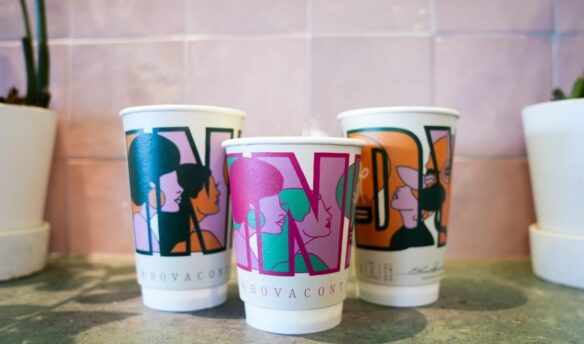It seems as if overnight CBD, short for cannabidiol, was slapped on product labels from skincare to pet treats.
By the end of 2019, CBD had become a $4 billion dollar industry—a 560% increase from the previous year—and is projected to be worth $22 billion by 2022, according to the Brightfield Group, a market research firm for cannabis and CBD.
CBD continues to rapidly grow within the specialty coffee and tea industry. Many cafés, if their state allows, have started adding it to their drink menus as an opportunity to make an extra couple dollars per beverage and share it with their customer base.
Is CBD on its way to becoming the new normal, or will it remain a flash-in-the-pan trend? Brands and researchers weigh in on how CBD and beverages can coexist, what to think about when purchasing CBD products, and what the landscape for CBD beverages looks like today.
Fresh Cup notes that laws speaking on CBD and cannabis are changing. Information here should not be taken as medical or legal advice.
What is CBD?
Before diving into CBD, it is essential to note where it comes from, how our bodies respond to it, and what is considered legal to sell in the United States.
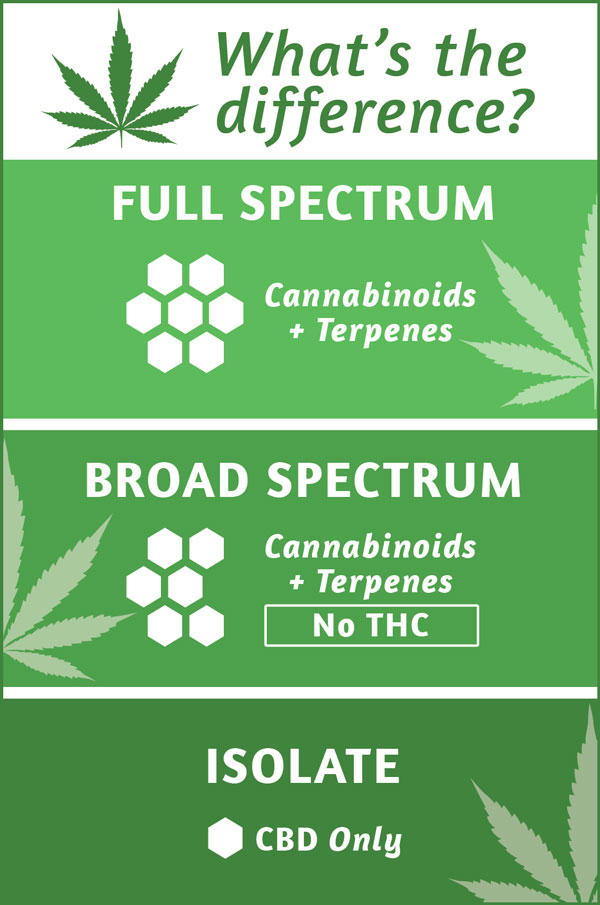
CBD can originate from two places: hemp plants, which produce hemp-derived CBD, or cannabis plants, which produce cannabis-derived CBD. Regardless of the source, both derivations of CBD look the same on a molecular level and will react the same on a biological level. Though CBD is extracted from these plants as an oil, it can be sold in a variety of forms, including gels, oils, gummies, and supplements.
THC, or tetrahydrocannabinol, and CBD both interact with a person’s endocannabinoid system, which plays a role in regulating mood, appetite, and sleep. For CBD products to be legal on the federal level, they need to contain less than 0.3 percent of THC, the compound found in the cannabis plant that produces “high” feelings.
Two years ago, the 2018 Farm Bill stated the sale and production of hemp and its extracts are legal, but cannot contain more than 0.3 percent of THC, or it would be seen as cannabis, which is currently federally illegal in the United States.
In short, CBD for commercial use must come from the hemp plant to purchase under federal law.
Entourage Effect
Zoe Sigman is a Portland, Oregon-based cannabis researcher and science editor for Broccoli magazine, a cannabis publication. She served as the program director at Project CBD, a nonprofit dedicated to promoting and publicizing research into the medical uses of CBD, and regularly speaks about cannabis and cannabis science to patients, medical professionals, and consumers.
After spending time in the coffee industry, Sigman started working at dispensaries and doing her own research as a budtender because customers were coming to her with difficult questions about cannabis and chronic illness. She came across one study early in her research about cancer patients who did not respond to opiates; instead, they were prescribed a medication containing isolated THC and CBD for their pain, and found that the combination was more effective together than when the compounds were taken separately. Since hemp-derived CBD is now legal, another common question that comes up among consumers is: Can CBD really work without THC?
It can, says Sigman—but it doesn’t “have to.”
“There is this theory called the ‘entourage effect’: that the sum of all of the active compounds in the cannabis flower working together is greater than individual compounds alone,” she says. “That is not to say individual compounds are not effective—they are, but when you combine them, there is significant synergy.”
Products often list CBD content in milligrams, but effective dosage can differ greatly from person to person. Researchers and doctors haven’t established dosing guidelines yet, and that lack of guidance is reflected in the concentrations of CBD found in CBD products. This is why the amount of CBD per serving in caffeinated beverages varies so widely: there is no standard on how much to add.
“Caffeine reduces the expression of adenosine receptors, which are responsible for us feeling tired,” says Sigman. “High dosages of CBD, on the other hand, can activate them, making us feel tired.”
While CBD could partially negate the energizing effects of caffeine, both compounds likely retain some action within the body. More research is needed in order to better understand the interaction of CBD and caffeine.
Lead with Labels
Then there is the branding of it all.
Many CBD brands state their product is “non-psychoactive.” From a neurological standpoint, however, since CBD has well-established anti-anxiety properties that affect the mind, it is inherently psychoactive, says Sigman. What brands should instead claim is that CBD is “non-intoxicating”—it won’t get you high like THC can.
Companies use scientific terminology hoping to persuade consumers that they know what they’re talking about, says Sigman, but it’s frequently used incorrectly. While CBD isn’t intoxicating, per se, it can make the consumer feel “different,” depending on how much they take.
“What it does to your body is very similar to the processes that happen when you sit in a hot tub for 20 minutes—you get out and you feel different,” says Sigman. “You feel calm, relaxed, and chill. Alcohol does a similar thing in your brain before you get tipsy or drunk—you feel more open and less aware of social anxiety. CBD can feel very similar at high doses.”
Together Like Oil & Water
How companies add CBD to their product is crucial, says Sigman.
Coffee and tea are water-based, while CBD is oil-based, meaning separation occurs when they interact together.
“If you are adding things to a water-based beverage, there are additional challenges,” she says.
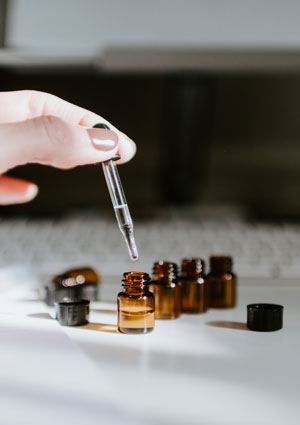
Technology to make oil more water-soluble is available, but there is a lack of information on how water-soluble cannabinoids are processed in the body. Sigman believes many companies are doing their own research, but the science has not caught up yet with water-soluble CBD. She references a study about CBD in drinks that showed that it tended to stick to the product container.
“It isn’t the case for everything, but it is a good idea to shake it like salad dressing,” says Sigman.
“When you take cannabinoids like THC and CBD, the absorption is much higher with fat, almost two to three times higher,” she continues. “If you take coffee with cream, it could help your body absorb the CBD better. In just black coffee or plain tea, your body won’t absorb as much.”
Regulation
While the status of CBD is still unfolding, it’s clear the demand for the product has been recognized by federal bodies: The Food and Drug Administration recently requested $5 million in the Fiscal Year 2021 budget under the Trump administration to continue to regulate the cannabis-derived products industry, including CBD.
“Each state has its own regulatory structures. In some states, like Oregon and California, CBD has gone through some sort of testing, so what it says on the packaging should be in the product,” says Sigman. “Beverage companies are all over the map, meaning quality can be all over map too. There are no consumer reports really collecting information on different CBD products yet.”
Sigman is working with the Clean Label Project, a nonprofit that tests products for quality, with the goal to inform customers and raise industry awareness. Founded by Jackie Bowen, the organization tested CBD products for pesticides, heavy metals, actual CBD content, and more. The results revealed how inconsistent brands can be, pointing to the need for more regulation in the industry.
Last year, Sigman testified to the FDA hearing concerning CBD and cannabis regulation, and says she will continue to provide comments to the organization concerning the topic.
“It’s the Wild West,” she says. “It is almost completely unregulated at the federal level. Each state has regulations depending on whether or not they legalize medical cannabis or CBD or recreational cannabis…those regulations are in effect, but then you have nationally available brands that don’t really have to play by state rules. And the FDA has sort of turned a blind eye unless they’re making medical claims.”
How Much Is Needed?
The amount of CBD needed to receive benefits varies from person to person. Understanding how much you are taking is the first step when you start out trying CBD.
“There is a massive dosage range that people found beneficial in regards to taking CBD,” says Sigman. “Consumers just have to start and see if you benefit. If they don’t feel anything the first time, they can continue to adjust their dose as they go along to see if it is helping.”
For café owners wanting to offer CBD on their menu, Sigman says awareness on how much CBD is being added to drinks and training baristas to speak about CBD to customers is vital.
“If you are adding it to a latte, how much are you adding? Do you know?” she says. “It might not be your responsibility to determine how much is appropriate, but you should be able to communicate how much CBD is going into a beverage.”
When buying CBD, there are a few things to keep in mind, including clearly labeling the dosing mechanism (a dropper, for example), making sure the label is backed up by a third-party certified lab, and knowing where the hemp is grown.
“You want to make sure you are getting what it says you are getting,” she adds. “Be familiar with the brand.”
Opportunities to Share
Coffee, cold brew, tea, lemonade, sparkling water—there are myriad beverage brands with CBD proudly featured. While regulation is at the forefront of navigating this industry, many businesses are aiming to make the CBD experience as enjoyable as possible.
Mary Joe in Costa Mesa, California, launched in 2017, after the founders personally tried out CBD for themselves and envisioned an opportunity for it to merge with coffee.
Mary Joe’s CBD Cold Brew contains water-soluble broad-spectrum extract, allowing it to mix well with the consistency of the coffee.
In the beginning stages, cofounder Ryan Rankin and his team experimented with combining the coffee and hemp oil to eliminate the chances of an oily aftertaste. They wanted to perfect the mixture so consumers could appreciate both, says Rankin.
“When we started, not many people knew about CBD and just going out and buying a dropper of it for them was daunting,” he says. “It was taking something new like CBD and something familiar like cold brew. Combining them really makes for a great start to your day. We get messages from customers saying their first introduction to CBD was our product.”
CBD’s draw for consumers ranges from simply wanting to try something new to finding personal lifestyle benefits, as it can help alleviate pain and manage anxiety, PTSD, and OCD.
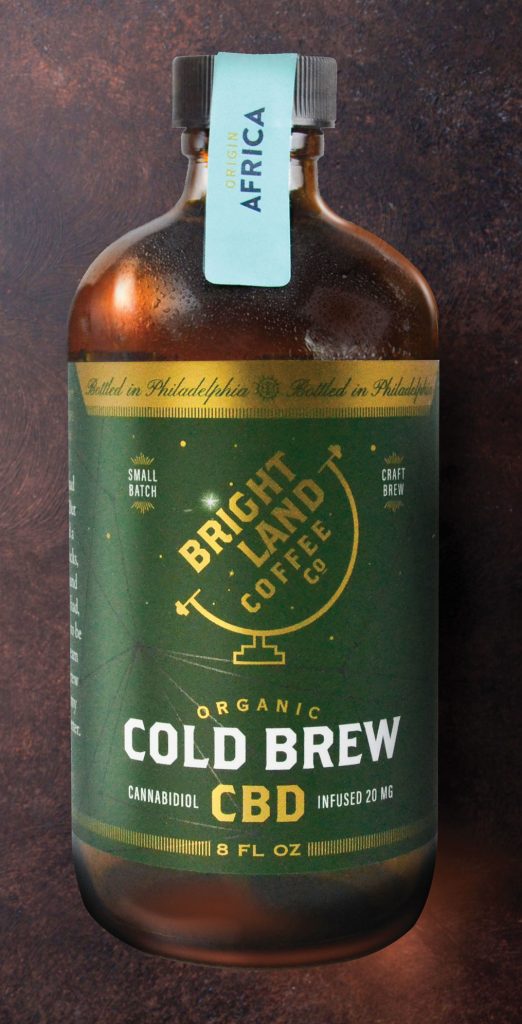
Brightland Coffee in Pennsylvania found many customers wanted a healthier alternative to manage a variety of symptoms, says owner Gary Lambert, who goes to chemotherapy treatment and introduced CBD into his lifestyle before starting his own cold-brew brand.
“I have customers who say they take it because they suffer from chronic migraines and they don’t like the current regimen of medications they have to take,” he says. “A lot of my customer base are usually in the older category who are long-time coffee drinkers, seeking an alternative to managing their pain.”
Beyond coffee and tea, Kickback, based out of Los Angeles, offers hemp-infused lemonade among its line because they wanted to target a wide audience.
“Lemonade is in a lot of grab-and-go spaces and many people will drink juice if they don’t regularly drink coffee or tea,” says Kickback founder, Pierre Real. “That with CBD is like friendly universal batteries that everyone can enjoy.”
Working Together
In late 2019, California’s Mood33 launched a hemp-infused beverage line. Its six flavors marry iced tea, botanicals, and fruit juices to appeal to a variety of taste palates, ranging from peach and mate to watermelon and basil.
Mood33 works with Evo Hemp, a hemp foods company out of Boulder, Colorado, whose hemp is grown on the Pine Ridge Indian Reservation by Native American farmers in South Dakota. In 2017, the company partnered with Lakota tribal member and entrepreneur Alex White Plume to bring back local jobs.
“For us, when we started, it was all about the supply chain,” says Mood33 cofounder Eric Schnell. “We chose to partner with Evo Hemp and basically have a fair trade supply economy created in the United States, which is the first of its kind, [partnering with] Alex White Plume and the Lakota Tribe from South Dakota. We felt that the story would resonate with consumers and resonate emotionally.”
Today, Evo Hemp’s products are offered at thousands of retailers, and they are business partners with other CBD ventures like Forest Coffee Trading Company, which makes CBD cold brew.
Interested customers have started approaching brands with their questions, putting some companies in the hot seat as they serve as gateway educators for CBD.
“I definitely had to read up,” says Garrett Kidd, the founder of Forest Coffee Trading Company. “Evo Hemp has been a great resource for us and a great partner for us to help educate our audience…I think the biggest question we get is, ‘What are the effects of caffeine with the effects of CBD going to do to my body?’ And really it’s nothing but a very harmonious relationship with the two. With something new like CBD that still has a lot of question marks, I think it’s in everyone’s interest to read up on it with an independent source and really understand what it is, because it is a fantastic supplement with a lot of benefits.”
Is CBD Really Just a Trend?
Because of CBD’s presence in beverage retail right now, it’s at the fingertips of a wide cross-section of consumers.
Boulder, Colorado’s SteepFuze started because founder Devin Jamroz wanted to provide people with an accessible form of a daily hemp extract dose.
“Right now, I think this is definitely a trend,” says Jamroz. “Last year alone, I read that about 20 new LLCs [were]forming per week in Colorado alone. We’re in the transition from the trend to mainstream right now. We’re not completely there with the FDA not providing clear regulations and oversight, and we will be in the gray area until that happens.”
But Jamroz believes CBD can survive in the beverage space.
“We really started as coffee people and being really into coffee, sourcing, roasting,” he says. “The idea that the interplay of the cannabinoids and the caffeine and the coffee creates a very unique experience. We’re not as focused on CBD’s effect on the person as we are about CBD’s effect on the coffee. We endeavor to create a world that views hemp extract as less of a trend, and more like, say, vitamin C.”
Education is Key
Elizabeth Bennett is an associate professor at Lewis & Clark College in Portland, Oregon, and has spent her career studying and specializing in topics including ethical consumerism and fair trade in the coffee, cannabis, and clothing industries. Throughout her research, she found many cannabis edible companies using fair trade and organic ingredients, but not including information about which farms or conditions the cannabis product was grown under.
“There’s a missed opportunity to really privilege and highlight growers that are doing a great job [growing cannabis for] edibles,” says Bennett. “One thing to note is that if coffee companies are going to be doing relationship trade, fair trade, or direct trade, all of which is important in the specialty coffee industry, they might also think about how to source their CBD.”
Her concern about CBD appearing in coffee shops is the limited amount of information provided to consumers.
“One of the primary sources of information that consumers have is the retailer that sells to them,” says Bennett. “The role of someone who works in a coffee shop, the role that they play in explaining where coffee comes from, and how it’s produced is extremely important….In the same way we would want budtenders to be able to provide great information about cannabis, we would want baristas to be able to provide great information about CBD.”
But information on CBD has a chance to be looked at intently in the future as the sector continues its growth in the United States.
“A really optimistic finding I have is that in 2016, we gave each dispensary we visited a grade of an A or a B or a C based on the quality of information they provided about ethics and the supply chain they were selling,” explains Bennett. “Very few dispensaries back then got an A, but in 2019, when we visited again, we not only had a large number of dispensaries getting an A, but we created an A+ category because so many dispensaries were able to provide high-quality, accurate information about ethics and supply chain in a way that almost no dispensary was able to in 2016.
“We’re seeing improvements,” she adds, “over the last three years in the quality of information about social responsibility and environmental stewardship and cannabis supply chains in talking to baristas and budtenders.”



